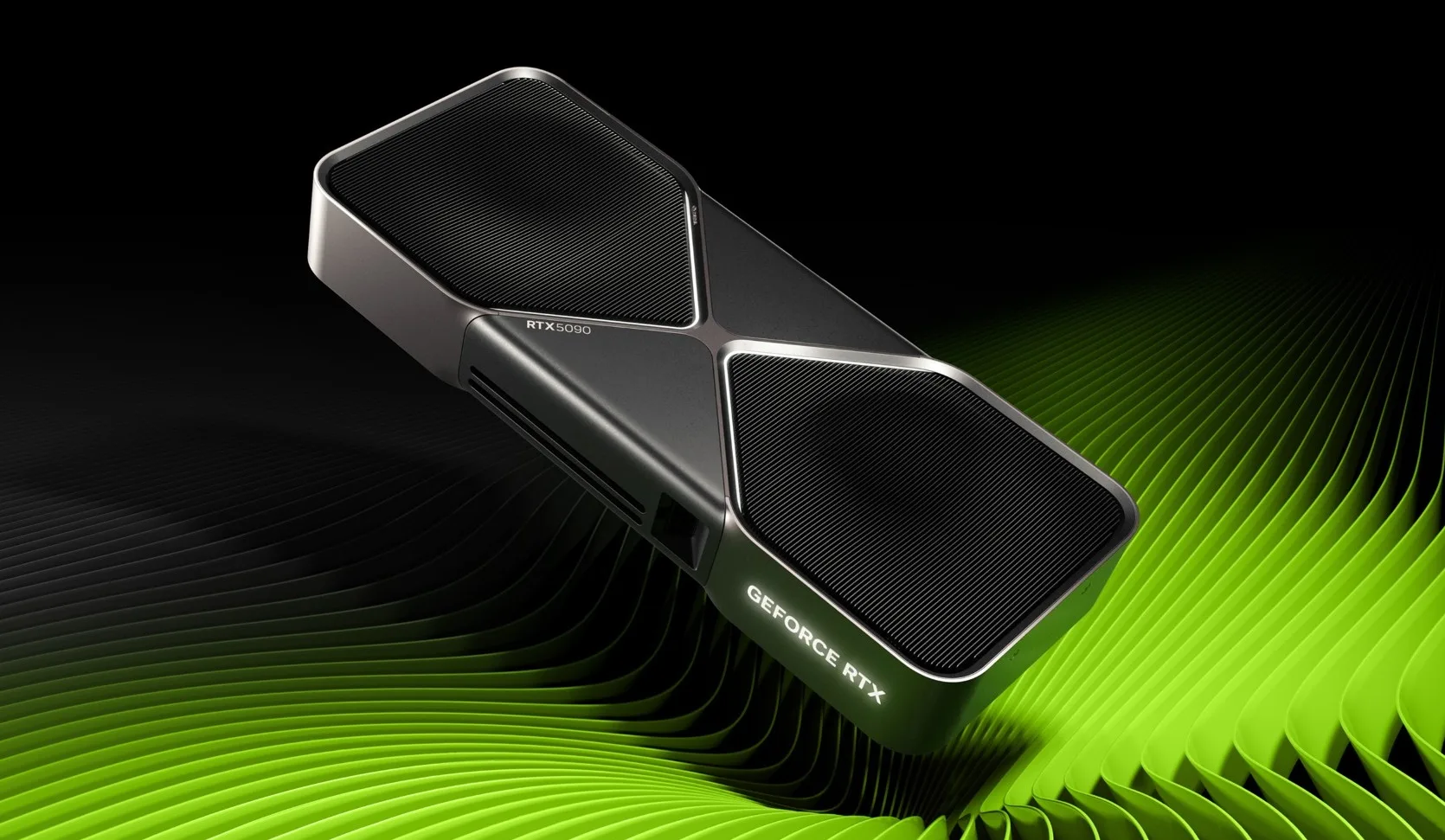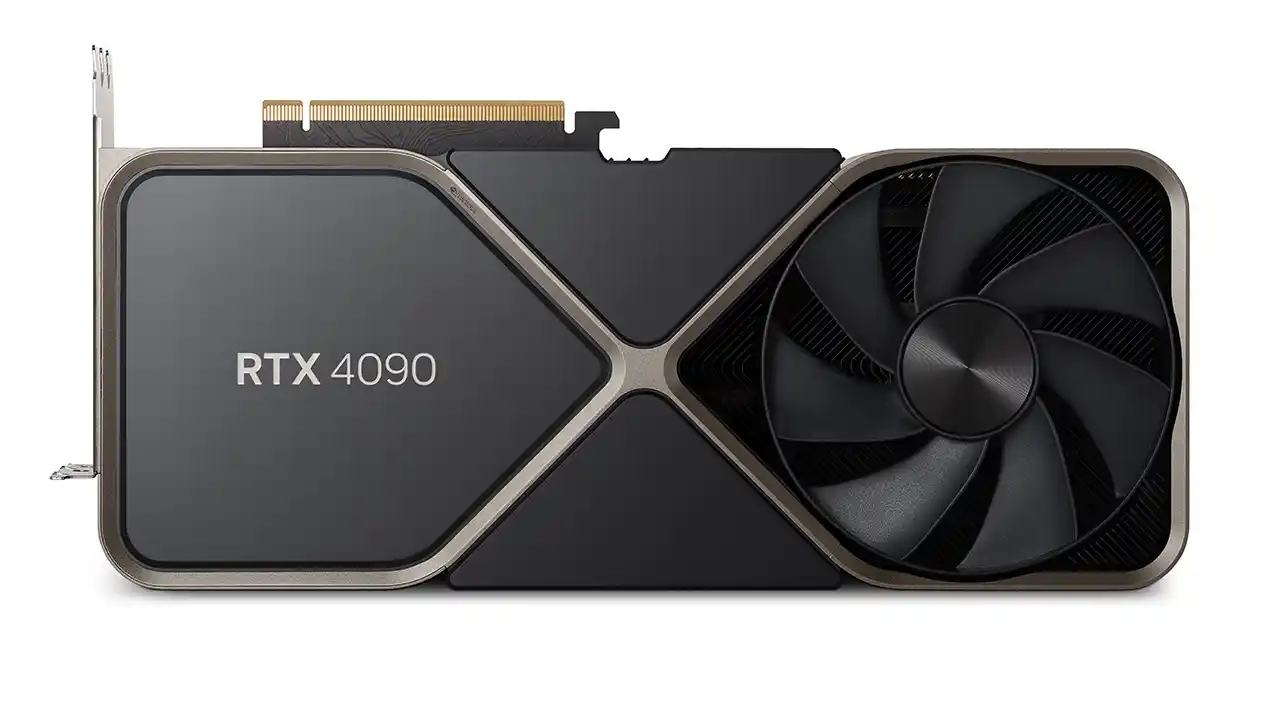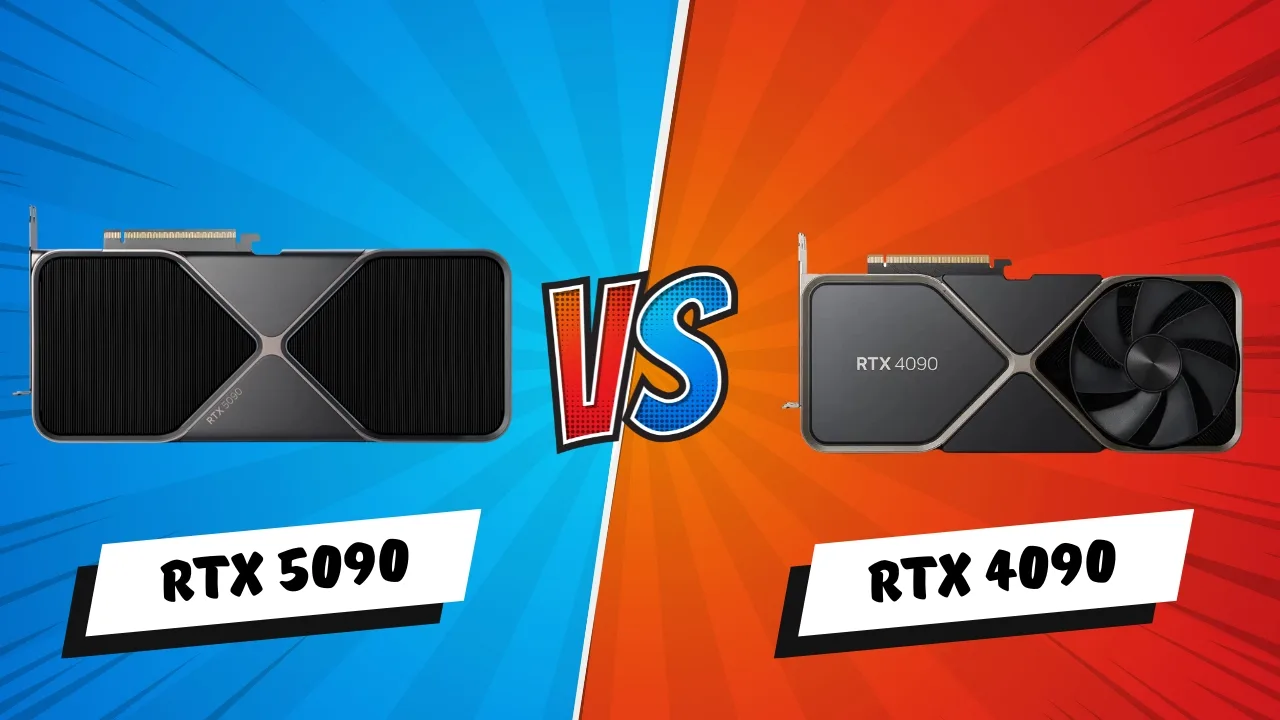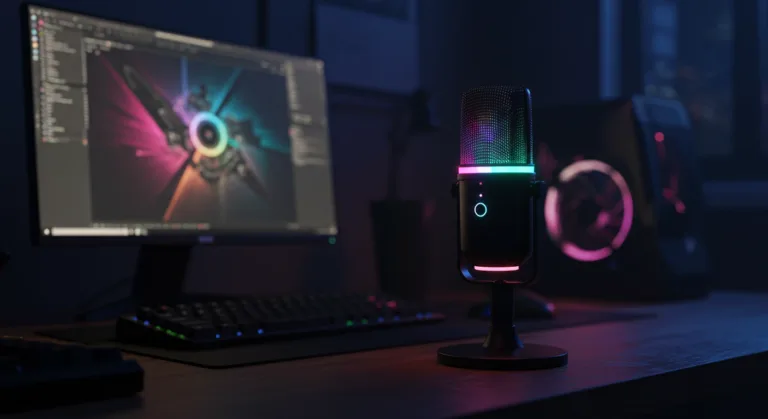Nvidia’s unveiling of the GeForce RTX 5090 has set the tech community abuzz, promising significant advancements over the already formidable RTX 4090. This article delves into the key differences between these two GPUs, examining their architecture, performance, memory, power consumption, and more.
Nvidia RTX 5090 vs 4090: Specs Comparison
 Nvidia GeForce |  Nvidia GeForce | |
|---|---|---|
Architecture | Blackwell (GB202) | Ada Lovelace |
Fabrication Process | TSMC N4P (4nm) | TSMC 4N (5nm) |
Transistors | 92 Billion | 76.3 Billion |
CUDA Cores | 21,760 | 16,384 |
Shader Cores | 125 TFLOPS | 83 TFLOPS |
Tensor Cores | 5th Generation | 4th Generation |
Ray Tracing |
| 3rd Generation |
Clock Speed | 2.01GHz (Base) | 2.23GHz (Base) |
DLSS | DLSS 4 | DLSS 3/3.5 |
Memory | 32 GB GDDR7 | 24GB GDDR6X |
Memory Bus | 512-bit | 384-bit |
Memory Bandwidth | 1,792 GBps (1.8 TBps) | 1008 GBps (1 TBps) |
TDP | 575W | 450W |
Price | $1,999 | $1,599 |
Release Date | January 2025 | October 2022 |
Architecture and Fabrication Process
The RTX 5090 is built on Nvidia’s new Blackwell architecture, utilizing TSMC’s N4P (4nm) fabrication process. In contrast, the RTX 4090 is based on the Ada Lovelace architecture with a 5nm process. This shift to a more advanced process allows the RTX 5090 to house 92 billion transistors, substantially increasing efficiency and performance from the RTX 4090’s 76.3 billion.
CUDA Cores and Performance Metrics
The RTX 5090’s 21,760 CUDA cores, a significant leap from the RTX 4090’s 16,384 cores, are a notable upgrade. This increase translates to higher computational power, with the RTX 5090 delivering 125 TFLOPS in shader performance compared to the RTX 4090’s 83 TFLOPS. Such enhancements suggest a considerable boost in rendering capabilities and overall performance.
Memory Configuration and Bandwidth
The RTX 5090 features 32GB of GDDR7 memory, surpassing the RTX 4090’s 24GB of GDDR6X. This upgrade increases capacity and elevates memory bandwidth to 1,792 GBps, compared to the RTX 4090’s 1,008 GBps.The wider 512-bit memory interface in the RTX 5090 further contributes to this enhanced bandwidth, facilitating smoother performance in memory-intensive applications and high-resolution gaming.
Ray Tracing and AI Capabilities
Both GPUs support ray tracing, with the RTX 5090 incorporating 4th generation cores delivering 318 TFLOPS, while the RTX 4090 utilizes 3rd generation cores at 191 TFLOPS.Additionally, the RTX 5090 introduces DLSS 4 with Multi Frame Generation, leveraging neural networks to generate multiple frames in advance, potentially enhancing gaming experiences with higher frame rates and improved visual fidelity.
Power Consumption and Thermal Design
The RTX 5090’s advancements come with increased power requirements. It features a TDP of 575 watts, up from the RTX 4090’s 450 watts. This rise necessitates robust cooling solutions and a capable power supply, considerations crucial for users planning to upgrade.
Pricing and Availability
Nvidia has announced that the RTX 5090 will be available starting January 30th, 2025, with a price tag of $1,999.In comparison, the RTX 4090 was launched at $1,599.The price increase reflects the substantial technological advancements and performance improvements offered by the RTX 5090
Conclusion
The Nvidia RTX 5090 represents a significant leap in GPU technology, offering substantial improvements in performance, memory, and features over the RTX 4090. While it comes with higher power requirements and a steeper price, its enhancements make it a compelling choice for enthusiasts and professionals seeking top-tier performance.
FAQs
What are the key differences between the RTX 5090 and RTX 4090?
The RTX 5090 features a new architecture (Blackwell), more CUDA cores (21,760 vs 16,384), increased memory (32GB GDDR7 vs 24GB GDDR6X), higher memory bandwidth, and enhanced ray tracing and AI capabilities compared to the RTX 4090.
Is the RTX 5090 worth the upgrade from the RTX 4090?
If you require the highest performance for tasks like 4K gaming, AI development, or professional rendering, the RTX 5090 offers significant improvements. However, the RTX 4090 remains a powerful and capable GPU for general use.
What power supply is recommended for the RTX 5090?
Given its 575-watt TDP, a high-quality power supply of at least 1000 watts is recommended to ensure stable performance and adequate cooling solutions.
Will the RTX 5090 fit in standard PC cases?
The RTX 5090’s size may vary depending on the manufacturer’s design. It’s advisable to check the specific dimensions and ensure your PC case can accommodate larger GPUs.
What is DLSS 4, and how does it benefit gaming?
DLSS 4 is Nvidia’s latest AI-driven technology that uses neural networks to generate multiple frames in advance, enhancing frame rates and visual quality in games.
When will the RTX 5090 be available for purchase?
Nvidia has announced that the RTX 5090 will be available starting January










